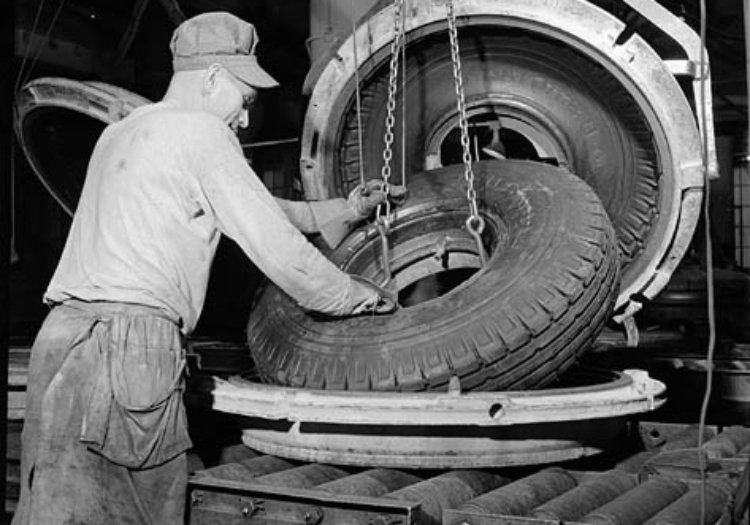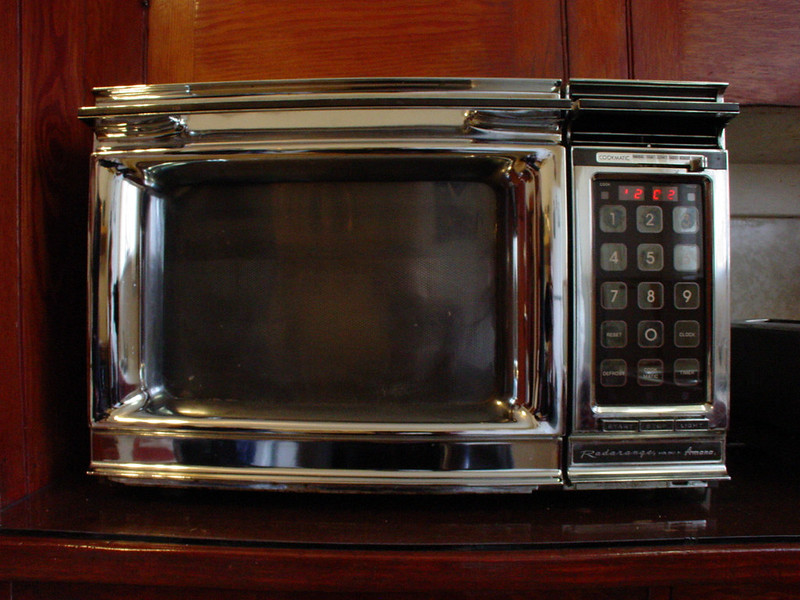Inventions To Come Out Of WWII
Human conflict is often crucial in the development of inventions we take for granted. With an accelerated focus on the development of new ideas and innovations, WWII saw the introduction of many things we still use today. Here are some of the most important inventions to come out of WWII.

Flu Vaccines
At the tail-end of WWI, a pandemic hit the world, dubbed the Spanish Flu. Millions of men had descended on Europe during WWI, in unsanitary and hazardous conditions, and this was a prime method of flu transmission—with the end of WWI, the virus traveled with homebound men. A staggering 50 million people were lost, with one-fifth of the world’s population becoming infected between 1918 and 1920. A rush was on to develop a flu vaccine.
Flu Vaccines
In the 1930s, scientists isolated the flu virus and by the 1940s, the US Army sponsored the development of a working flu vaccine. Throughout WWII, efforts were accelerated to develop a vaccine, with officials and medical researchers hoping to avoid another pandemic.
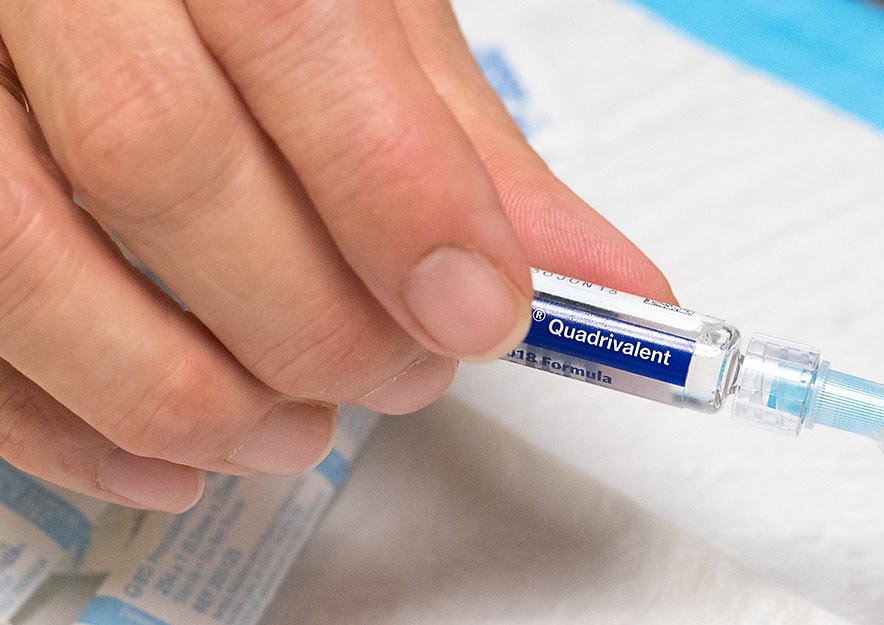 Government of Prince Edward Island, Flickr
Government of Prince Edward Island, Flickr
Flu Vaccines
The first flu vaccine was approved for military use in 1945 and was opened to civilians in 1946. One of the researchers working on the flu vaccine was Jonas Salk, the American scientist who later developed the polio vaccine.
 SAS Scandinavian Airlines, Wikimedia Commons
SAS Scandinavian Airlines, Wikimedia Commons
Penicillin
Before the development of penicillin and other antibiotics, a simple cut could lead to a serious and even fatal infection. Penicillin was discovered by Scottish scientist Alexander Fleming in 1928, but its widespread use didn’t come about until WWII when mass-producing penicillin became possible.
 Unknown author, CC BY 4.0, Wikimedia Commons
Unknown author, CC BY 4.0, Wikimedia Commons
Penicillin
The manufacturing of penicillin was a priority during WWII, especially given the fighting conditions in such widespread locations as Europe, North Africa, and Asia. Treatment of the wounded right at the front became increasingly possible due to penicillin being available to stave off infections. Penicillin had the amazing ability to reduce pain and increase the chance of survival.
Penicillin
The production of penicillin was so crucial that in order to prepare for D-Day, the Unites States alone produced over 2.3 million doses of penicillin for the Allied forces. As with the flu vaccine at the end of WWI, penicillin became widely available for civilian use after WWII.
Jet Engines
The jet engine was first designed around 1938 by Frank Whittle. Propellers for airplanes had reached their maximum efficiency as engineers wanted planes to go faster. The jet engine works by discharging a fast-moving “jet” (a stream of fluid) of heated gas that generates thrust by propulsion. The jet engine’s potential for air conflicts was immeasurable.
 British Government, Wikimedia Commons
British Government, Wikimedia Commons
Jet Engines
Frank Whittle was an engineer with the Royal Air Force. He filed the first patent for the jet engine in 1930, but the first successful test of an airplane powered by jet propulsion was in Germany in late August 1939, on the eve of Germany’s invasion of Poland. Germany had been preparing for future conflicts throughout the 1930s, while the British were still experimenting with jet technology.
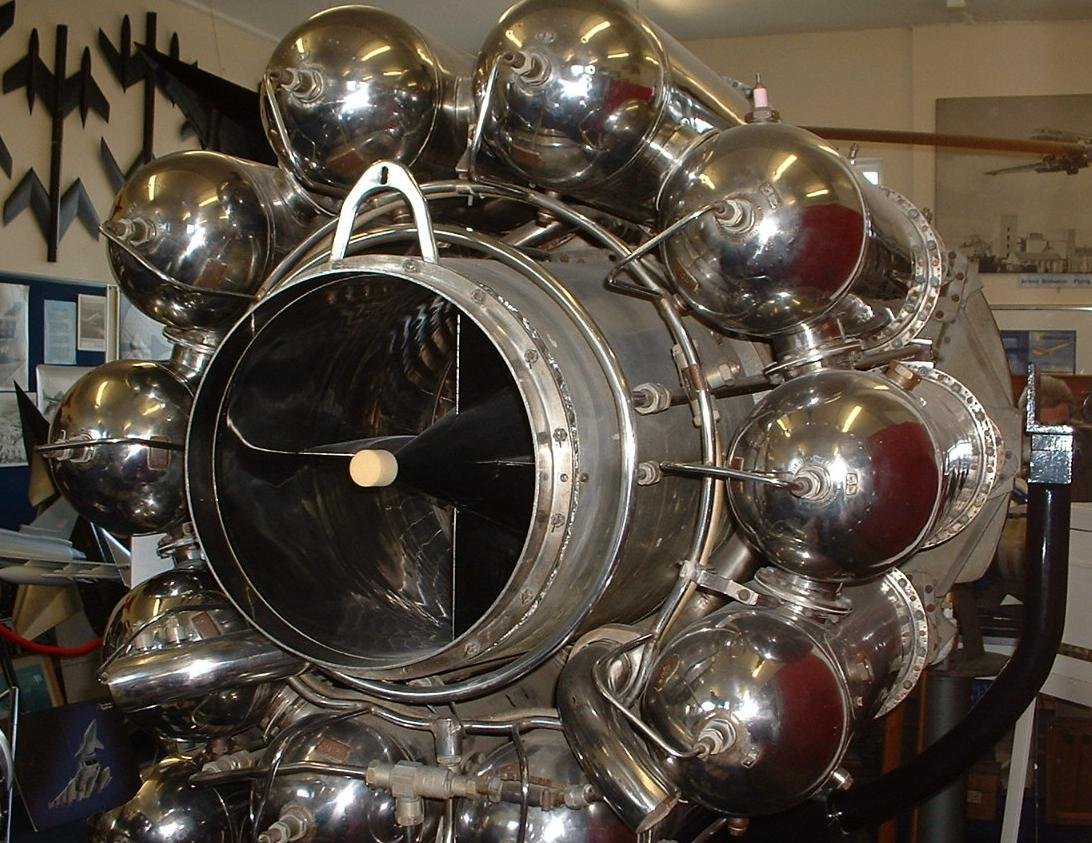 Gaius Cornelius, Wikimedia Commons
Gaius Cornelius, Wikimedia Commons

History's most fascinating stories and darkest secrets, delivered to your inbox daily.
Jet Engines
With the onset of WWII in September 1939, Britain began to develop planes using Whittle’s design, but the first Allied jet planes didn’t appear ready for battle until May 1941. Jet planes were much faster than propeller planes but they required more fuel. Since they were still in early development, they didn’t have that much of an impact on the war but would become an important means of transportation for both military personnel and civilians.
 Unknown author, Wikimedia Commons
Unknown author, Wikimedia Commons
Blood Plasma Transfusion
Although blood transfusions had been possible prior to WWI, it wasn’t until that conflict that storing blood for transfusions became possible with improvements in electrical refrigeration. Blood could be kept in storage for up to 28 days and having blood close to the front saved countless lives. The main drawback was that blood had to be the right type for a transfusion and there was never any guarantee that a given blood type would be available when needed.
 DiverDave, CC BY-SA 3.0, Wikimedia Commons
DiverDave, CC BY-SA 3.0, Wikimedia Commons
Blood Plasma Transfusion
A process to separate blood plasma from whole blood was developed and was further standardized during WWII by US surgeon Charles Drew. Blood plasma is a crucial component of blood but when separated from whole blood, it contains no blood cells. When freeze-dried and mixed with water, blood plasma becomes a sort of universal blood substitute that can be used in transfusions with the proper blood type is unavailable.
 National Archives, Wikimedia Commons
National Archives, Wikimedia Commons
Blood Plasma Transfusion
With the ability to bring blood transfusions to the front line, supplies of blood were no longer limited by blood type. Plasma can be given to anyone regardless of blood type, making it even easier to administer on the front lines.
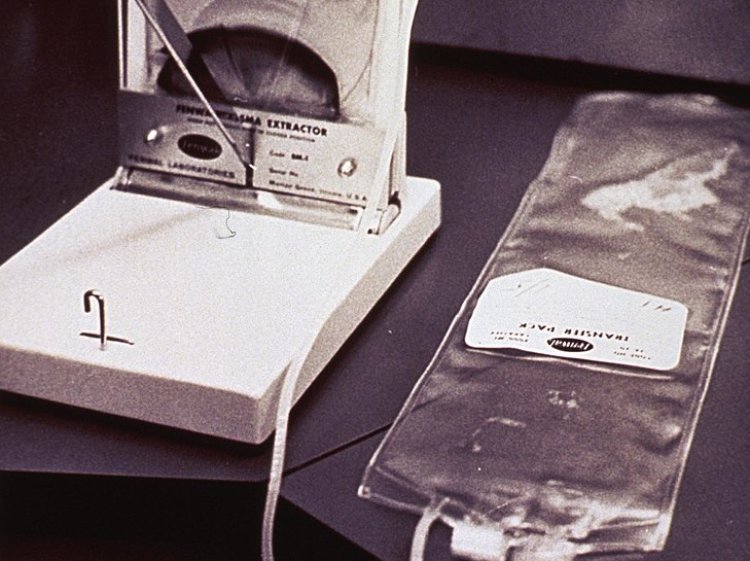 National Library of Medicine, Wikimedia Commons
National Library of Medicine, Wikimedia Commons
Electronic Computers
The word “computer” has taken on different meanings depending on the context and the time in history. In the 1940s, people who performed complex equations by hand were actually called “computers”. Early machines used to calculate, and which were the forerunners of electronic computers, were generally called “calculating machines”.
 Unknown author, Wikimedia Commons
Unknown author, Wikimedia Commons
Electronic Computers
During WWII, machines were developed to do the calculations for ballistics trajectories and those who had been doing the computations by hand were often employed to program those machines. The idea of storage and memory was developed during this time and the ENIAC machine was created with the ability to store data.
 U.S. Army Photo, Wikimedia Commons
U.S. Army Photo, Wikimedia Commons
Electronic Computers
Other computing machines were developed during WWII but it was the race to break the German Enigma cipher which escalated the development of electronic computers. In Britain, Alan Turing led the team which eventually cracked the code and for that, Turing is often referred to as the “father of computer science”. The next big development came in the form of Colossus machines, a series of British electronic computers created to break messages encrypted by the German Lorenz cipher.
 Unknown photographer, Wikimedia Commons
Unknown photographer, Wikimedia Commons
Radar
Early development of a radar system took place in the 1930s, with the first practical radar system produced in 1935. A technology that uses radio waves to determine the distance, direction, and radial velocity of objects had clear implications for military use. In fact, experiments at MIT’s Radiation Laboratory, which played a key role in the development of the radar, were initially trying to use electromagnetic radiation as a weapon, not a form of detection.

Radar
The idea for an electromagnetic radiation weapon was that a beam of energy could be sent to a plane from the ground, incapacitating the pilot and causing the plane to crash. This didn’t work but it did show that the waves would bounce back and they realized the technology could be used for detecting objects in the air with some precision.
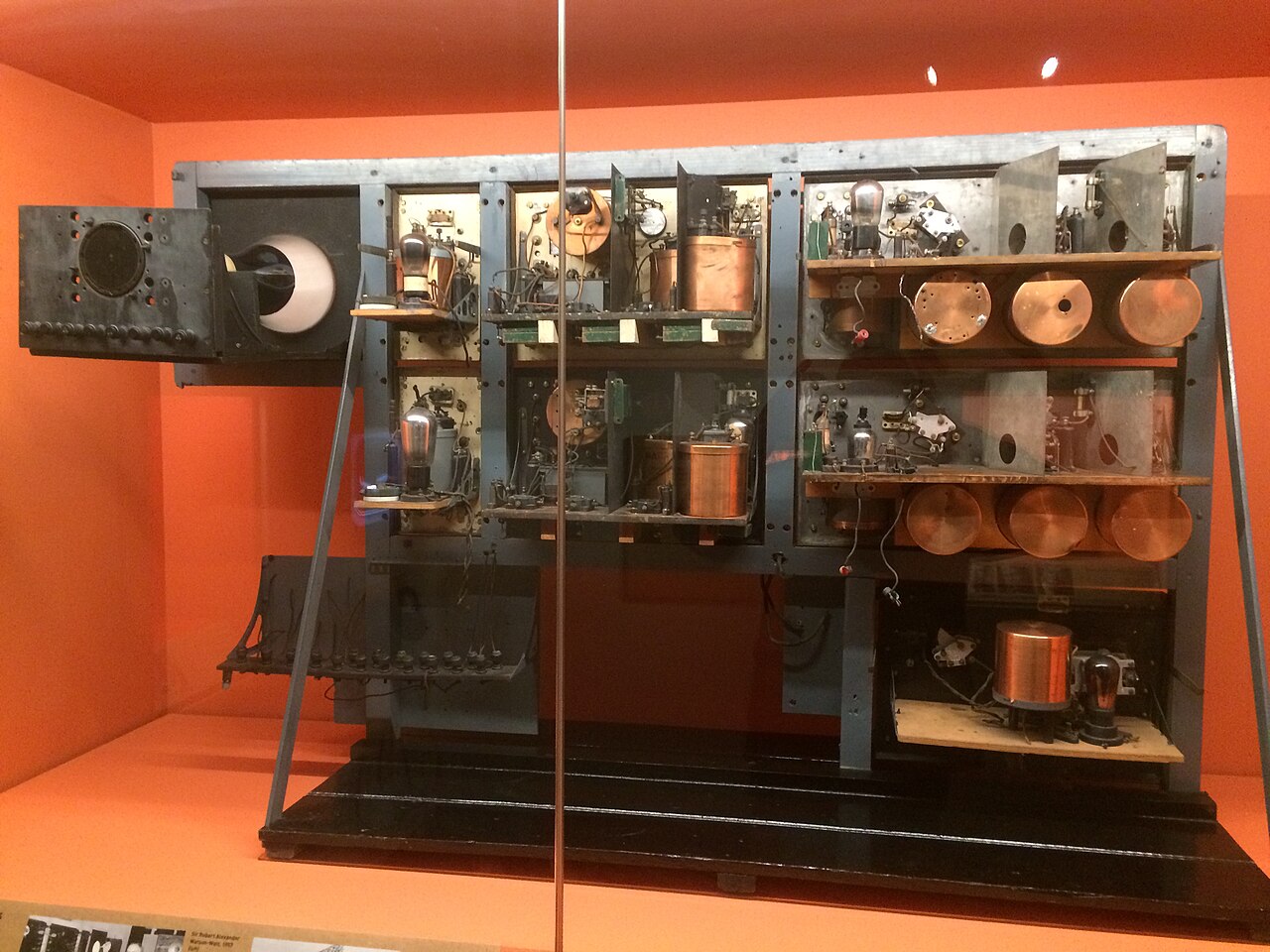 Elektrik Fanne, CC BY-SA 4.0, Wikimedia Commons
Elektrik Fanne, CC BY-SA 4.0, Wikimedia Commons
Radar
Radar was successfully used throughout WWII, helping with the detection of enemy ships and planes. So successful was radar that radar jamming became an imperative. In WWII, one technique developed by the British was chaff, which was the dispersal of thin strips of aluminum from airplanes during a raid. Dispersed chaff produces a large radar cross-section intended to blind or disrupt radar systems. Anti-aircraft weapons were rendered blind by radar being unable to detect the location or numbers of enemy aircraft, and with the tide of WWII turning against Germany, this type of radar jamming became decisive.
 Royal Air Force official photographer, Wikimedia Commons
Royal Air Force official photographer, Wikimedia Commons
Sonar
Sonar is a technique that uses sound propagation underwater to navigate, measure distances, and detect objects on or under the surface of the water, such as submarines, surface vessels or mines. The first recorded use of the technique was in 1490 by Leonardo da Vinci, who used a tube inserted into the water to detect vessels by ear. In WWI, a rudimentary sonar system was used to detect submarines.
 ÄDA - DÄP, CC BY-SA 3.0, Wikimedia Commons
ÄDA - DÄP, CC BY-SA 3.0, Wikimedia Commons
Sonar
Early sound propagation systems used in WWI were passive systems, meaning they could only detect movement, without precision location or transmitting data. During WWII, effort was focused on developing a more sophisticated system, using a transducer to generate a sound wave reflected from the target. These echo ranging systems came to be called sonar (Sound Navigation And Ranging).
 Nolabob, CC BY-SA 4.0, Wikimedia Commons
Nolabob, CC BY-SA 4.0, Wikimedia Commons
Sonar
This was crucial for WWII as German submarines were taking their toll on Allied shipping. With sonar, submarines could be detected with some precision, and with the breaking of the German Enigma code, submarines became increasingly ineffective for Germany.
The Jeep
Having a practical means of transportation, without relying on armored vehicles, was always crucial during WWII. Every nation developed its own all-terrain vehicles that could easily move through front lines and the rubble of ruined cities. Perhaps none is more iconic for WWII than the Jeep.
 Military Vehicle Photos, Wikimedia Commons
Military Vehicle Photos, Wikimedia Commons
The Jeep
The United States called on its civilian car manufacturers to develop vehicles for military use. It had to be light and maneuverable and be able to hold at least three men while being capable of traversing thick mud and steep gradients. Three manufacturers developed a hybrid, taking the best of each design. Led by the Ford Motor Company, along with American Bantam Car Company and Willys-Overland, production of the new vehicle began.
 Hichary, CC BY-SA 4.0, Wikimedia Commons
Hichary, CC BY-SA 4.0, Wikimedia Commons
The Jeep
Making its debut in 1940, over 600,000 were built from 1941 until 1945 to a single standardized design. Its name was both “Willys MB” and the “Ford GPW”, and was formally called the “US Army truck”. The word "jeep" was slang for new, uninitiated recruits, as well as any new, unproven vehicles or prototypes. While other vehicles were called Jeeps over the years, the name eventually became synonymous with the Willys MB.
 Ekem, CC BY-SA 3.0, Wikimedia Commons
Ekem, CC BY-SA 3.0, Wikimedia Commons
Superglue
Inventions are often the result of accidents or are the unexpected results of work on an unrelated concept. In 1942, Harry Coover was designing new clear lenses for military use. After testing the chemical compound cyanoacrylate, he dismissed it for his purposes due to its unexpectedly strong adhesive properties.
 White House, Wikimedia Commons
White House, Wikimedia Commons
Superglue
This new substance did find a use, however. As this was during WWII, this adhesive proved useful for other fields and this super glue was utilized in many areas of WWII. After WWII, it was produced on a mass scale for consumers, but it also found a new function during the Vietnam conflict in the 1960s: Doctors discovered it could be used to stop wounds from bleeding, which was especially useful in the jungles that the Americans found themselves fighting.
Synthetic Rubber
Rubber is a natural substance from the tropical rubber tree. With the global scale of WWII, the supply of rubber, crucial to all aspects of the preparation, was in jeopardy. Found in Southeast Asia, rubber from the rubber tree was readily available under British and French colonial forces until Japan seized those territories.
 Alfred T. Palmer, Wikimedia Commons
Alfred T. Palmer, Wikimedia Commons
Synthetic Rubber
From footwear to tires for military vehicles and other clothing and equipment, rubber was essential. Constructing one tank required one ton of rubber. With the loss of access to rubber trees in Southeast Asia in 1942, the Allies had to find an alternative.
Synthetic Rubber
American scientists had already been experimenting with synthetic alternatives to natural rubber and with much urgency, efforts were increased to produce synthetic rubber at a mass scale. Dozens of factories producing synthetic rubber were built across the US and by 1944 they had produced 800,000 tons of synthetic rubber.
The Atomic Bomb
Outside of human conflict, there is no use for an atomic bomb, but since Germany was rumored to be working on an atomic bomb, it was crucial for the Allies to develop one. With 125,000 workers and scientists, several tons of uranium ore, and at a cost of $2 billion (about $36 billion today), a network of laboratories was set up. With Germany’s capitulation in May 1945, they were no longer under threat of an atomic bomb.
The Atomic Bomb
The conflict against Japan, however, continued. It was argued that Japan would not surrender, and an Allied invasion of Japan itself would be necessary—at the cost of millions of lives. With the successful tests completed, the Japanese cities of Hiroshima and Nagasaki were chosen as targets.
 Nick-D, CC BY-SA 4.0, Wikimedia Commons
Nick-D, CC BY-SA 4.0, Wikimedia Commons
The Atomic Bomb
On August 6, 1945, an atomic bomb was dropped on Hiroshima, and three days later a second was dropped on Nagasaki. In total, 246,000 people lost their lives, mostly civilians. Six days later, Japan surrendered and WWII came to an end.
 Flight Officer Bruce C. Saxton, Wikimedia Commons
Flight Officer Bruce C. Saxton, Wikimedia Commons
The Microwave Oven
The microwave oven seems like an iconic product of the post-WWII years of prosperity. As a quick method of cooking, it seemed ideal for the space age 1950s and 1960s. But the history of microwaves goes back a little further, back to the development of radars.
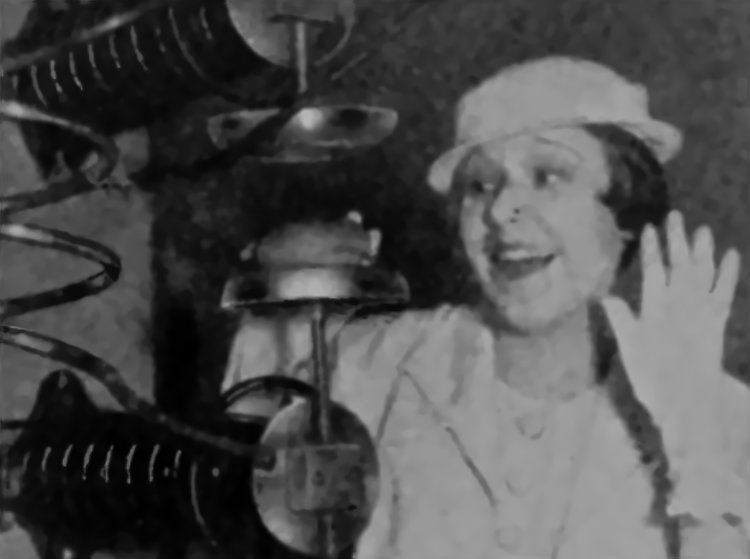 Unknown author, Wikimedia Commons
Unknown author, Wikimedia Commons
The Microwave Oven
Percy Spencer was an engineer who worked on the development of radar during WWII. Spence was testing a radar machine when the chocolate in his pocket melted. He experimented with other food and worked with shorter wavelengths—microwaves.
 Science Museum London, CC BY-SA 2.0, Wikimedia Commons
Science Museum London, CC BY-SA 2.0, Wikimedia Commons
The Microwave Oven
Soon the application of microwaves to heating food in a specially designed appliance took place. The microwave oven was born and by the 1970s, millions of homes in the US had one.
One of the engineers who helped pioneer radar for use in WWII, Percy Spencer, went on to find a popular commercial use for the technology.
Satellites
Late in WWII Germany had a superweapon. Their V1 rocket, a long-range missile, had already been used against the UK and the V2 rocket promised to be even more devastating and possibly turn the tide in favor of Germany. But the truth is that V2 rocket technology came too late for it to have much impact on the outcome of WWII.
 Jan B.H.A. Vervloedt, CC BY-SA 3.0, Wikimedia Commons
Jan B.H.A. Vervloedt, CC BY-SA 3.0, Wikimedia Commons
Satellites
The technology developed for the launch systems and guidance systems of the V2 rocket was developed after WWII by both the US and the USSR, with the help of captured German scientists and engineers. With this technology, the launch of satellites was possible and soon humans were being sent into space.
Duct Tape
Nothing seems to be as useful as duct tape: In household and industrial applications, its strength and ease of use remain popular. Duct tape in fact goes back to WWII, to Vesta Stoudt, a munitions factory worker in Illinois. Stoudt saw that military equipment was being sealed with unreliable paper tape and she set about inventing a stronger waterproof tape.
Duct Tape
Stoudt wrote to President Franklin D Roosevelt, telling him about her invention, and he ordered mass production of the tape, to be used by US forces overseas. An earlier type of cloth tape was made from cotton duck cloth and was sometimes referred to as “duck tape”. After WWII, Stoudt’s invention was regularly used in the construction of air ducts and soon the product came to be known as “duct tape”.







